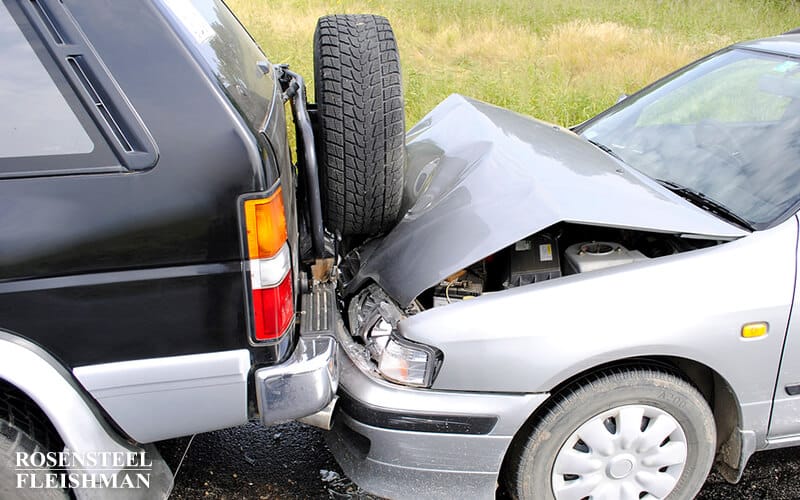It’s hard to describe the exact feeling after a car accident. One minute you’re driving along, and the next, your world is spinning—literally and emotionally. For many people, what comes after the crash is even more overwhelming. You're left dealing with pain, confusion, questions about fault, and pressure from insurance companies. It’s no surprise that […]

The Sudden Emergency Doctrine in North Carolina
The sudden emergency doctrine is a defense that may be raised in a negligence action which lowers the duty of care a person owes when he is confronted with a sudden emergency which was not brought about by his own negligence. North Carolina courts have summarized the sudden emergency doctrine as follows in automobile cases:
An automobile driver, who, by the negligence of another and not his own negligence, is suddenly placed in an emergency and compelled to act instantly to avoid a collision or injury, is not guilty of negligence if he makes such a choice as a person of ordinary prudence placed in such a position might make, even though he made neither the wisest choice nor the one that would have been required in the exercise of ordinary care except for the emergency.
Holbrook v. Henley (NC App 1995)
When North Carolina courts determine whether the sudden emergency doctrine is applicable to a specific case, they perform a two-step inquiry. First, they determine if the defendant was confronted with a sudden emergency. The court of appeals has defined an “emergency situation” as one which which “compels [defendant] to act instantly to avoid a collision or injury.” (Holbrook)
Second, they determine if the emergency was caused in whole or part by the negligence of the defendant. The rationale behind this second requirement is that “a party cannot by his own negligent conduct permit an emergency to arise and then excuse himself for his actions or omissions on the ground that he was called to act in an emergency.” (Holbrook)
There are several common scenarios in which the sudden emergency doctrine might come up, and we will look at a few of them below.
Sudden Stop Causing a Rear End Accident
A defendant might argue that a sudden emergency arises when a car in front of him stops suddenly and he rear ends that car. North Carolina courts, however, have be reluctant to apply the sudden emergency doctrine in these cases, explaining that the defendant should expect sudden stops and follow other cars at a distance that will allow him to stop without colliding with those cars.
For example, in the case Holbrook v. Henley, the defendant braked to avoid colliding with the cars in front of him, but the braking caused his car to slide sideways into the plaintiff’s lane and collide with the plaintiff. The court of appeals determined that the defendant was confronted with an emergency situation. In analyzing the second factor, the court stated that
As a general rule, every motorist driving upon the highways of this state is bound to a minimal duty of care to keep a reasonable and proper lookout in the direction of travel and see what he ought to see. The law requires a motorist to take notice that the exigencies of traffic may, at any time, [require] a sudden stop by him or by the motor vehicle immediately in front of him.... [T]he reasonably prudent operator will not put himself unnecessarily in a position which will absolutely preclude him from coping with an emergency. Consequently, [w]here a motorist discovers, or in the exercise of due care should discover, obstruction within the extreme range of his vision and can stop if he acts immediately, but his estimates of his speed, distance, and ability to stop are inaccurate and he finds stopping impossible, he cannot then claim the benefit of the sudden emergency doctrine. Stated alternatively, [d]rivers are therefore required in the exercise of ordinary care to expect sudden stops when driving in heavy traffic. In accord, such stops do not constitute an unexpected or emergency situation.
Because the emergency situation with which the defendant was confronted “was brought about, at least in part, by his own potential inattention and failure to maintain a proper lookout,” the application of the sudden emergency doctrine was not proper.
Weather Related Accidents
A defendant might also argue that a sudden emergency arises when faced with an icy patch of road. However, if it was reasonably foreseeable that there would be icy patches on the road, then the fact that the driver did not see the icy patch before skidding on it does not qualify that scenario as a sudden emergency. For example, in the 2007 North Carolina Court of Appeals case, Sobczak v. Vorholt, the defendant and plaintiff were travelling in opposite directions on a two-lane road and the road was slippery in spots with sections of black ice. The defendant’s car slid on some ice, fishtailed, and crashed into the plaintiff’s car. Even though the defendant claimed that he did not see any icy patches in the previously travelled portion of the road, the court reasoned that the defendant did observe snow, which he knew could turn to ice when it is packed down and so “was on notice of a potential encounter with ice on the road, and that hitting ice as he drove was foreseeable.” Therefore, the defendant
knew or in the exercise of reasonable care should have known that the snow on [the road] could have become ice in some areas, [and] the mere fact that he did not see the icy patch he hit in advance of hitting it is insufficient to establish that he was thereby confronted with a sudden emergency.
Sudden Obstruction in Travel Lane
A final situation where a defendant might argue that the sudden emergency doctrine applies is where the defendant is faced with a sudden obstruction in his travel lane, such as an oncoming vehicle, a person or an animal. In the 2013 court of appeals case, Fulmore v. Howell, the defendant was driving his truck and was faced with an oncoming vehicle in his lane. He “jerked” the wheel and hit his brakes but collided with the oncoming vehicle, which caused his truck to end up in the opposite lane where it collided with the plaintiff’s vehicle. The defendant “described the time between when he first saw [the oncoming] vehicle traveling in the opposite direction in his lane until his collision with [plaintiff] as ‘instantaneous[.]’” The court held that the sudden emergency doctrine did apply and stated that
[t]he cases reveal that motorists who have been confronted by an automobile approaching in the wrong lane have, on occasions, (1) continued straight ahead, (2) turned to the right, (3) turned to the left, and (4) stopped.... In applying the doctrine of sudden emergency, the courts have not been inclined to weigh in “golden scales” the conduct of the motorist who has acted under the excited impulse of sudden panic induced by the negligence of the other motorist.
Courts might also apply the sudden emergency doctrine when a pedestrian suddenly runs out into the roadway, causing the driver to swerve and hit another car. However, North Carolina courts have held that motorists owe a special duty of care to children on or near a roadway:
The duty the law imposes upon a motorist who sees, or by the exercise of reasonable care should see, children on or near the highway has been frequently declared by this Court. He must recognize that children have less discretion than adults and may run out into the street in front of his approaching automobile unmindful of the danger. Therefore, proper care requires a motorist to maintain a vigilant lookout, to give a timely warning of his approach, and to drive at such speed and in such a manner that he can control his vehicle if a child, in obedience to a childish impulse, attempts to cross the street in front of his approaching automobile.
Gupton by Gupton v. McCombs (NC App 1985)
Therefore, in Gupton, where the defendant driver saw the boy standing on the side of the road, she should not have assumed that he would wait to cross the street and should have kept a continuous watch on him and honked her horn to warn him when he started to cross. By failing to keep a vigilant lookout and failing to sound her horn, she helped to create the emergency, and the sudden emergency doctrine did not apply.
Finally, what about the scenario where a driver is suddenly confronted with an animal in the road? The sudden emergency doctrine applies to situations where a driver is "suddenly and unexpectedly confronted with imminent danger to himself or others.” (Ligon v. Matthew Allen Strickland (NC App 2006)) Therefore, if a driver swerves only “to save the life of an animal” this is not a situation where the sudden emergency doctrine is properly applied. However, if a collision with the animal would cause “imminent danger” to the driver or another person, the sudden emergency doctrine could be properly applied.
If you have been injured in a car accident, visit www.rflaw.net for legal help.
Additional Car Accident Articles
Being involved in a car accident can shake up your entire day, if not your entire month. Whether it’s a minor fender bender or something more serious, dealing with the aftermath often feels like stepping into a world full of confusion. One minute you're heading to work, the next you're standing beside a damaged car, […]
Getting rear-ended in traffic or jolted during a sudden stop is more than just a frustrating inconvenience. For many Charlotte drivers, what follows isn’t always visible. Whiplash is one of the most common injuries that people experience after a car accident, and yet it’s often misunderstood or overlooked. The pain might start off mild or […]
After a serious car accident, it's normal to feel overwhelmed. Between dealing with injuries, lost time from work, and the endless calls from insurance companies, most people aren’t sure what their next step should be. The physical pain is hard enough, but the uncertainty of what comes next only adds to the stress. You’re likely […]
